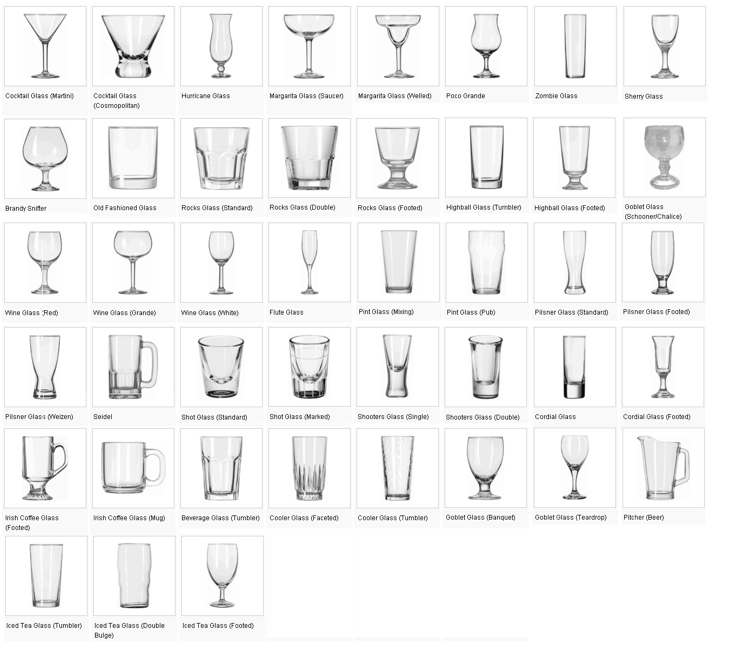COCKTAILS: Glassware 101
Last Edited: December 6, 2016
Author:
Every cocktail deserves a glass that was designed for it. Otherwise, it’s like looking at a painting that was inadequately matted and framed. What’s within is still the same, but experiencing it just isn’t—you can’t ignore the weird edges and borders that surround it. Or like eating a perfectly aged steak on styrofoam and plastic. Memories of freshman year, and all the boxed wine we drank out of coffee mugs, will be recalled fondly, but best left in the last decade.
But what’s essential glassware, and what’s not? Is it really worth splurging on a set from Williams Sonoma? Have no fear. Read on to find some frequently asked questions about cocktail glassware answered.
Is it worth it?
Yes, if you enjoy cocktails with more than two ingredients in them. Like wineglasses, different ‘mouths’ of the glass can open up the aromas of the cocktail. Aroma and flavour are very codependent when it comes to experience. This study in the Scientific American demonstrates the impossibility of tasting strawberry when you’re holding your nose. (Downright tragic when you apply that to fruity cocktails like the Strawberry Hills or pineapple mint sangria. Summer, we miss you.)

Fine. What are the absolute basics?
That depends on what you drink, and how. If you throw a lot of parties, consider everyone’s palettes—a gin drinker is going to prefer a very different kind of glass compared to a whiskey woman.
Essential glassware is typically classified by:
Wine, red. They’re large to accommodate the aeration (aka the airing of its aroma). Red wine smells heady. It’s why it makes you giddy.
Wine, white. Smaller compared to the red wine glass. That’s because the more air white wine is exposed to (aka oxidization), the more it loses its flavour nuances, like the slight kicks of floral, or honey, or fruit.
Wine, sparkling. Has the smallest mouth, because who wants their bubbly go flat quickly? No one.
Highballs. They’re the tall, skinny cylinders that usually contain gin or vodka cocktails, like the Tom Collins or our beloved Caesars. Designed to accommodate the large amount of mixer ingredients, more complex cocktails can often be found in these.
Lowballs. If lowballs were a person, they’d read GQ and have multiple tailors in their address book. That’s because lowballs are classic and prides itself on refinement. Cocktails served in lowballs often require muddling (of herbs, like mint in a mojito), or a little ice engineering to accommodate and even its intense flavours (like the giant ice cube often found in an Old Fashioned).
What if I’m an aspiring fancy person?
To be honest, aren’t we all? The non-essential, speciality glassware below actually reflect many cocktails we have featured like the Aberlour whisky, which wouldn’t be caught dead in anything but a snifter.
Martinis. Like revenge, martinis are best served cold. That’s why the martini glass is designed that way—to minimize contact with your hand, so the cocktail stays icy.
Margaritas. This one stumps both mixologists (many of whom actually serve margaritas in lowballs) and historians (who have traced the origins of the margarita glass to the French champagne glass, designed to mirror Marie Antoinette’s bosom). A write-off, but hey, at least you’d know it’s a margarita when it comes in these glasses.
Hurricanes. Shaped like a hurricane—or a lady’s silhouette, depending on who you ask. Like the margarita glass, this design is less about functionality and more about cultural homage. It originated in the 40s in New Orleans, and often accommodates the more classic fruity drinks like Mai Tais, the Singapore Slings, and Piña Coladas.
Snifters. Shaped like a Hurricane, with a much larger bottom and shorter. It’s designed to keep a drink warm—unlike the martini glass—so if you’re a fan of hot toddies or brandy tastings, this one is an essential.